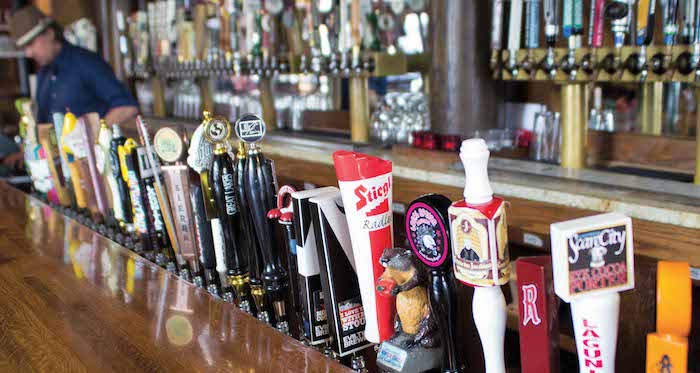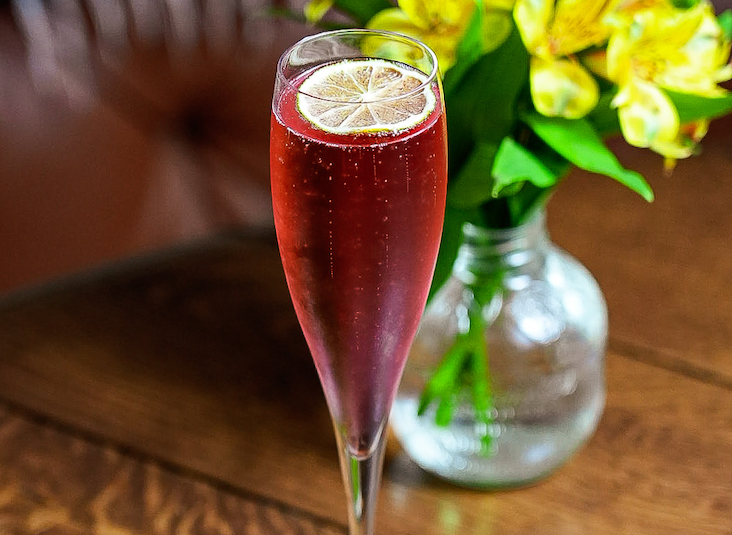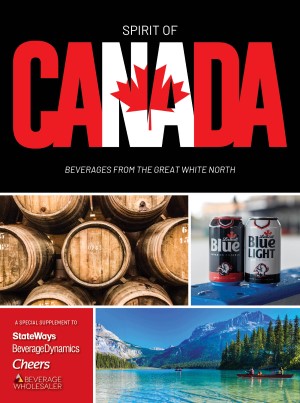There are more than 3,464 breweries in the U.S.—as of March—now producing an ever-growing number of individual beers. Add that to increasing import portfolios, and building a balanced beer selection can seem a Herculean task.
Whether you are improving upon an existing lineup or just getting started, consider the following suggestions as you lay the foundation for a competitive beer program.
1) Solicit—and use—consumer input
With so many beers available, external input from knowledgeable customers can be an asset. City Tavern in Culver City, CA, provides a bustling meeting place for some of Hollywood’s biggest film and TV studios; it’s also a destination bar for craft beer lovers. And general manager Ryan Hughes often heeds customer suggestions. “As long as it is something that we believe is a good beer, I would absolutely take requests into consideration.”
Pay it forward by letting your clients know about special beers. “We have some of our regulars on speed-dial for when certain beers come up, and we shoot them a text so they don’t miss it,” Hughes says. “Usually they are here within the hour.”
At Eastern Standard Kitchen and Drinks, an upscale American restaurant and lounge in Boston’s Kenmore Square, you can find a modern beverage program set in Old World ambience. The establishment prides itself on a drinks selection that extends from classic cocktails and unique wine varietals to a beer list with something for everyone.
Bar manager Naomi Levy also appreciates guest input when it comes to beer. “There have been times a beer aficionado opens your eyes to something you’ve never heard before,” Levy says. “But mostly you have to let your program be your program, or it won’t have a solid voice.”
2) Look for market strength
Consider your market and which beer styles are gaining momentum. IPAs may be pervasive in popularity throughout the country, but there are several elements within the style to consider.
For instance, Two Hearted Ale, from Bell’s Brewery in Kalamazoo, MI, is an award-winning American IPA that’s widely distributed. But it might not perform well in a city like San Diego where intense, West Coast IPAs are standard, and the local brewing companies such as Stone and Ballast Point contribute to supplying the style.
3) Seek out seasonals
From the warm, wood finishes and the low lighting to the traditional fare and clinking glasses, Republic in Minneapolis has all the makings of an old-school pub, but the beer selection is modern and expansive. Co-owner Matty O’Reilly gets a jump on seasonal releases. “I proactively stay ahead by researching release dates,” he says.
Part of his strategy likely has to do with the pub’s Minnesota location, he notes. With the massive changes in temperature, which can go from from minus 10 degrees to 60 degrees in a few weeks, “there is a huge change in what people are drinking.”
Most operators organize their rotations to feature heavier, stronger styles in colder months and lighter, more sessionable brews during the dog days of summer to ensure they are offering the most appealing beers with the seasons.
4) Consider customer comfort levels
No beer menu should be tailored to accommodate one level of drinking proficiency, but it is important to keep your audience’s beer education in mind. If you are the first craft-beer-centric bar or restaurant in a neighborhood, an obscure gruit ale might be too advanced.
But if you are trying to distinguish yourself from several other neighboring establishments with impressive beer offerings, a bottle of Special Herbs—a gruit-style brew from Portland, OR-based Upright Brewing—might be just the thing.
The first thing you may notice at Links Taproom in Chicago is the digital menu. Two monitors above the bar display listings of the 36 beers on tap, along with their descriptions, pouring size, and how much of the keg remains.
This high-tech presentation illustrates the thoughtfulness that co-owner Michael Quinlan put into the beer menu. “It’s important to consider the needs of any customer who walks through the door, regardless of their experience with or knowledge of craft beer,” Quinlan says.
This may mean dedicating a few taps to gateway beers, he adds. “We always keep Left Hand Milk Stout [from Left Hand Brewing Co. in Longmont, CO] on nitro and [Chicago’s] Metropolitan Brewing Lager on our list as a way to bridge that knowledge/taste gap.”
5) Carve out and maintain a concept
With so many choices in beer styles and brands, it’s easy to get out of control with your selection. Try to stay somewhat focused to organize the beer program. “If you remain true to your concept, everything else falls into place,” Quinlan says.
Links Taproom, for example, focuses on domestic beers vs. imports, which limits the brands it chooses to feature. “When it comes to building our tap list, we are local first, Midwestern second and American third,” Quinlan notes.
Food pairings are also a consideration. If a bar or restaurant already emphasizes a certain style of cuisine, the beer program should provide offerings that complement menu choices. It’s an important factor for Republic, “since we’re a restaurant and sell as much food as we do beer, I look at flavor profiles a lot and how different beers pair with different foods,” O’Reilly says.
6) Pursue best-in-style beers
Levy enhances the Eastern Standard beer program with strong style representations. “It’s important to highlight not only some unique offerings, but also to find a mix of one-offs and solid expressions of some of the most called for styles,” she says.
The Eastern Standard bottle list is organized by style with carefully appointed versatility. If you look under “Saisons,” for instance, you can choose from a classic like Saison Dupont, imported from Brasserie Dupont in Belgium, or a local such as Saison Renaud from Mystic Brewery in Chelsea, MA—two different but valuable stylistic interpretations.
“Be sure to give different brands and styles a reasonable amount of time each to expose plenty of your guests to it before rotating out,” Levy adds.
7) Rotate for variety

Links Taproom has two monitors above the bar, displaying listings of the 36 beers on tap, with descriptions, pouring size, and how much of the keg remains.
Bringing in new beer styles and brands is a reliable way to invigorate a beer program; it is attractive to new customers and offers variety to regular guests. At City Tavern, Hughes considers tap rotation a critical component of the selection.
“Sometimes it is hard for me not to keep reordering a favorite,” she says. “But unless it is something I cannot get again easily, everything has its time and place here.”
City Tavern’s regular customers appreciate the bar mixing up the beer offering. “There are bestsellers that make their way back into the rotation much more than others, but as long as I can find something comparable in style and price, I like to keep things fresh,” Hughes says.
8) Gain advantage with exclusives
City Tavern is situated between competitive restaurants and bars, so a selective beer program is essential. That’s why Hughes keeps her tap list edgy: “Make sure there are at least a few rare beers that you won’t find at all the other bars around the block—sours, barrel-aged beers, and funky, one-off infusions.”

Eastern Standard in Boston seeks out strong style representations for its beer program, such as Evil Twin Hipster Ale.
Exclusivity is not something you can just demand from beer distributors, however. You have to build relationships with beer representatives and distributors to access special brews.
“Sometimes it is a numbers game that I have to play,” Hughes notes. “I keep a steady amount of the core beers in rotation, and then when the special stuff comes I am at the top of the allocation list.”
9) Celebrate local—quality local
Many breweries promote the idea of “drinking locally.” As beer ingredients are rarely sourced locally, these slogans are meant to engender community support.
There are some advantages to offering locally made beer. For example, buying local will increase your chances of getting the freshest product—especially beneficial to hoppy beers—and the financial and environmental cost of shipping is minimized.
Forming relationships with local breweries can also build support that benefits both bar and brewery.
That said, just because a beer is made locally does not mean it is good by default. Quality should trump geography, and if a beer is inconsistent or compromised by infection, you should immediately rotate it out and notify the brewery of the issue.
At Republic, “we get praised on our commitment to small and emerging breweries, with a focus on quality,” O’Reilly says. Looking for what’s local is another way to anticipate market changes. “We spend a lot of energy meeting new breweries before they launch and enter in to the Minnesota market,” he adds.
While local is good, “it’s always quality for me,” O’Reilly says. “If it’s quality and local, that’s a win-win.”
Assessing the quality of a beer is not a subjective evaluation of its features. Simply put, when beer leaves the brewery, it should be consistent within the brand and free from off-flavors—including infection and oxidation.
The only way to ensure you are getting a quality product is to familiarize yourself with the beer and know what to expect. That means tasting. A lot.
Erika Bolden is a freelance writer and Certified Beer Server. She is a frequent contributor to L.A. Weekly, West Coaster SoCal and All About Beer magazine.









